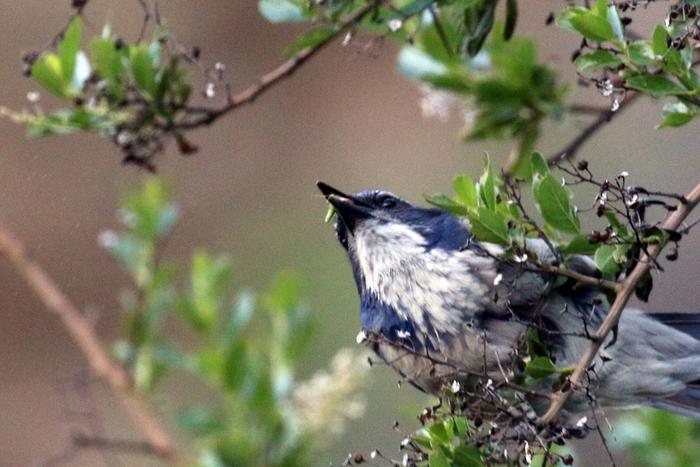Montana State Scientists Unveil Groundbreaking Research on Ancient Life Discovered in Yellowstone’s Hot Springs
Ancient Microbial Adaptations: Insights from Yellowstone’s Geothermal Springs A recent publication in the esteemed journal Nature Communications has unveiled groundbreaking research by Montana State University scientists, shedding light on the evolutionary journey of ancient microorganisms as they adapted from a low-oxygen prehistoric environment to the oxygen-rich habitat we know today. This study is a continuation […]


Ancient Microbial Adaptations: Insights from Yellowstone’s Geothermal Springs
A recent publication in the esteemed journal Nature Communications has unveiled groundbreaking research by Montana State University scientists, shedding light on the evolutionary journey of ancient microorganisms as they adapted from a low-oxygen prehistoric environment to the oxygen-rich habitat we know today. This study is a continuation of over two decades of tireless research conducted in Yellowstone National Park, spearheaded by MSU professor Bill Inskeep. The recent findings contribute to our understanding of the fundamental processes that shaped life’s evolution on Earth and underscore the significance of these unique thermal environments in driving microbial adaptations.
The article, titled “Respiratory Processes of Early-evolved Hyperthermophiles in Sulfidic and Low-oxygen Geothermal Microbial Communities,” was published on January 2. The research team, including Inskeep and associate professor Mensur Dlakic, meticulously compared heat-loving organisms residing in two distinct thermal features of Yellowstone National Park: Conch Spring and Octopus Spring, both located within the park’s Lower Geyser Basin. These springs provided the researchers with an invaluable opportunity to study microbial life in environments that differed in their geochemical composition, particularly in terms of sulfide and oxygen levels.
Conch Spring and Octopus Spring were selected for their geochemical similarities, with a critical distinction that makes them a rich area for research: Conch Spring has higher sulfide and oxygen concentrations compared to Octopus Spring. This divergence allowed the team to explore two contrasting thermal environments where the adaptation strategies of microorganisms could be observed in relation to the varying oxygen levels. The springs’ temperatures, hovering around 190 degrees Fahrenheit, create an extreme environment where thermophilic microbes thrive, offering a glimpse into the microbial responses to evolutionary pressures.
The research revealed a fascinating interplay between the types of thermophilic microbes found in each spring. Notably, three types of these heat-loving organisms were present in both environments. However, the ecological dynamics were distinctly different. In the higher-oxygen environment of Octopus Spring, the microbial communities exhibited greater diversity compared to the more oxygen-limited conditions of Conch Spring. Such findings provide crucial insights into how life evolved in the wake of the Great Oxidation Event, a transformative period in Earth’s history, occurring approximately 2.4 billion years ago, when oxygen levels in the atmosphere drastically increased.
Professor Inskeep posits that these thermophiles likely played a pivotal role in the emergence of aerobic microbial life during the earth’s transition to an oxygen-rich atmosphere. He noted that Octopus Spring, with its more abundant oxygen, harbors a greater variety of aerobic organisms. This correlation between oxygen levels and microbial diversity highlights the adaptation strategies that took place as organisms evolved to utilize oxygen for survival, thereby shaping the course of life on Earth.
The iconic streamers formed by these microorganisms resemble small kelp plants, dynamically waving in the currents of the hot springs. The structures serve as hosts for microbial communities, demonstrating remarkable adaptability in the face of environmental challenges. While the physical appearance of the streamers may be superficially similar between Conch and Octopus springs, the microbial assemblages within them are qualitatively different. The stark contrast in diversity emphasizes the evolutionary paths taken by these organisms influenced by their specific environmental conditions.
To delve deeper, the researchers employed genomic analysis to compare respiratory genes between the microbes residing in Conch Spring and those in Octopus Spring. They found that genes associated with very low oxygen levels were substantially more active in the Conch Spring microbes, whereas those in Octopus Spring expressed genes adapted to higher oxygen levels. This shift in gene expression illustrates a microbial response to changing environmental conditions and showcases the genetic plasticity that has enabled life to adapt over geological timescales.
The significance of this research extends beyond the realm of microbiology; it touches on fundamental questions about the origins of life and its evolution in response to planetary changes. Inskeep, who has dedicated his career to studying Yellowstone’s unique ecosystems since 1999, emphasizes the ongoing quest for knowledge in microbial ecology. He reflects on the vast amount of data accumulated over the decades and acknowledges that every finding opens new avenues for inquiry and exploration.
The collaboration between Inskeep and Dlakic has been further bolstered by a grant from the National Science Foundation’s Opportunities for Promoting Understanding through Synthesis program, awarded in 2020. Their work signifies a broader effort to classify and understand Yellowstone’s thermophiles, which have remained enigmatic despite their ecological importance. This interdisciplinary approach has not only illuminated the complexities of microbial life but has also sparked interest in the broader implications of these adaptations for understanding contemporary life forms.
MSU’s strategic position within the Greater Yellowstone Ecosystem offers unparalleled opportunities for conducting this type of research. Inskeep notes the challenges of replicating these natural conditions in a laboratory setting, where creating the precise balance of temperature, oxygen, and sulfide found in geothermal springs would be nearly impossible. The ability to observe these organisms within their native environments is essential for gaining accurate insights into their biological processes and evolutionary significance.
As the research highlights, the mechanisms employed by these seemingly simple organisms can provide deeper insights into the complex narratives of life’s evolution and survival strategies. While the connection between ancient microorganisms and modern human life may appear distant, understanding these fundamental processes can enrich our knowledge of how diverse life forms—ours included—have navigated the challenges of survival across epochs.
Ultimately, this groundbreaking work serves as a potent reminder of the intricate and often precarious interactions that define life on our planet. By unveiling the adaptations of ancient microorganisms to their surroundings, scientists are uncovering the building blocks of life that have withstood the test of time, offering a glimpse into the resilience and adaptability inherent in all living organisms.
This research is a compelling demonstration of how studying ancient life can illuminate current biological phenomena and contribute to our understanding of biodiversity, evolution, and environmental adaptations.
Subject of Research: Microbial adaptations in geothermal environments
Article Title: Respiratory processes of early-evolved hyperthermophiles in sulfidic and low-oxygen geothermal microbial communities
News Publication Date: January 2, 2025
Web References: Nature Communications
References:
Image Credits:
Keywords: Thermophiles, Microbial Ecology, Great Oxidation Event, Yellowstone National Park, Aerobic Organisms, Evolution, Geothermal Springs, Environmental Adaptation, Genomic Analysis, Biodiversity, Extremophiles, Synchronicity in Microbial Life.
Tags: ancient microbial adaptationsConch Spring and Octopus Spring studyearly-evolved hyperthermophiles researchevolutionary journey of microorganismsgeochemical composition of hot springsheat-loving organisms in geothermal settingslow-oxygen prehistoric environmentsMontana State University scientistsNature Communications publication on ancient lifeoxygen-rich habitats in naturethermal environments and microbial lifeYellowstone geothermal springs research
What's Your Reaction?

































